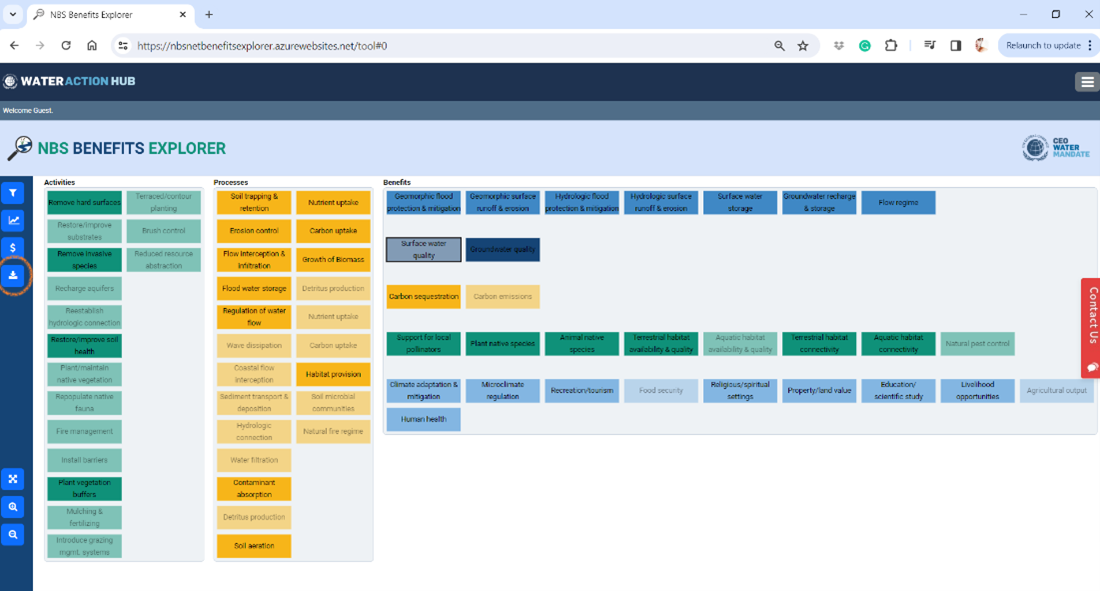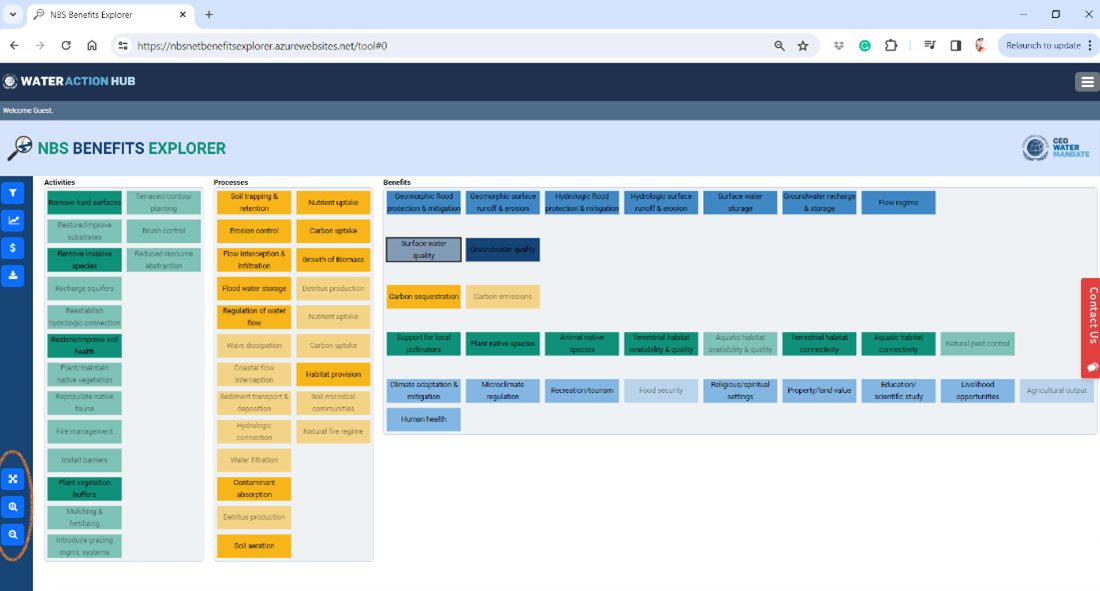Please complete your name, email, select a question type from the list and enter your message to contact us.
Step 1
Choose a starting point for using this tool based on what you are looking to understand.
You can either explore which benefits a certain activity will generate (Activities → Benefits) or which activities will achieve desired benefit(s) (Benefits → Activities).
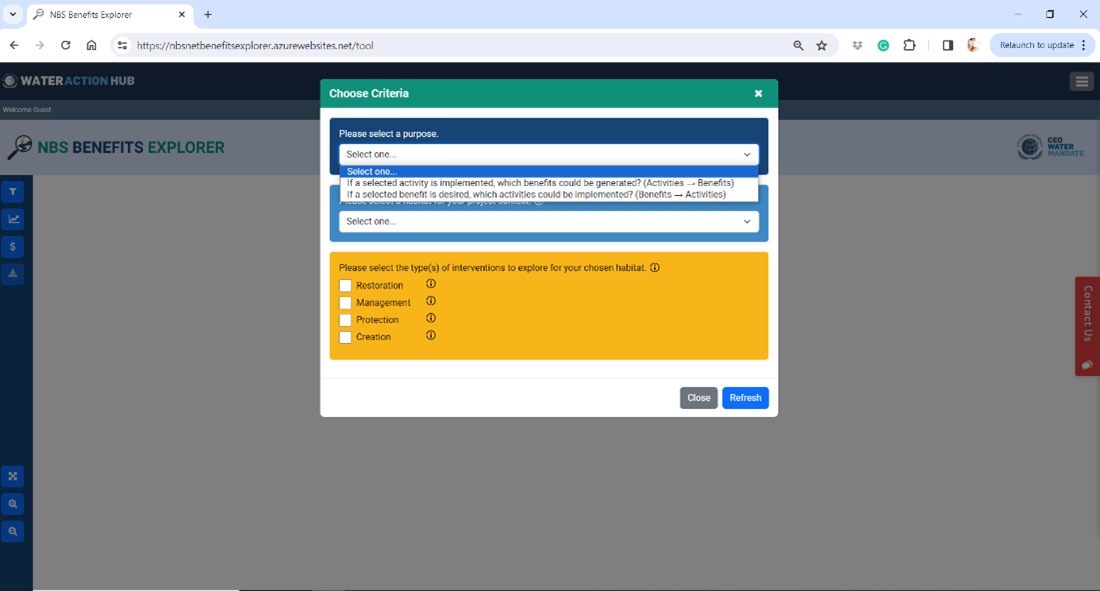
Step 2
Choose a habitat that is relevant to your local project context.
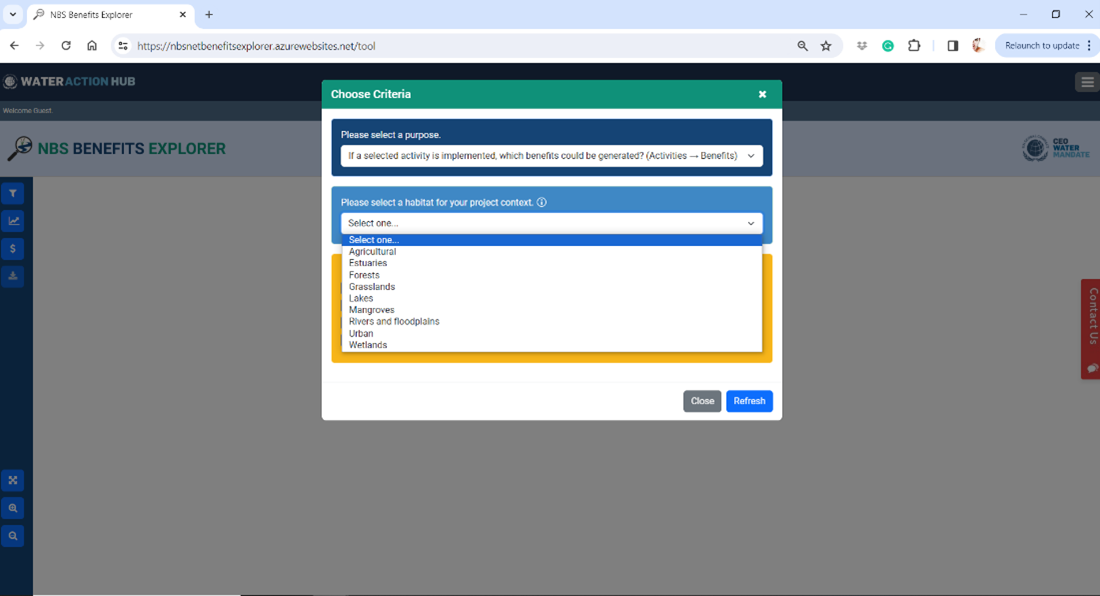
Step 3
Choose at least one type of intervention that is needed in your chosen habitat. Multiple interventions can be selected.
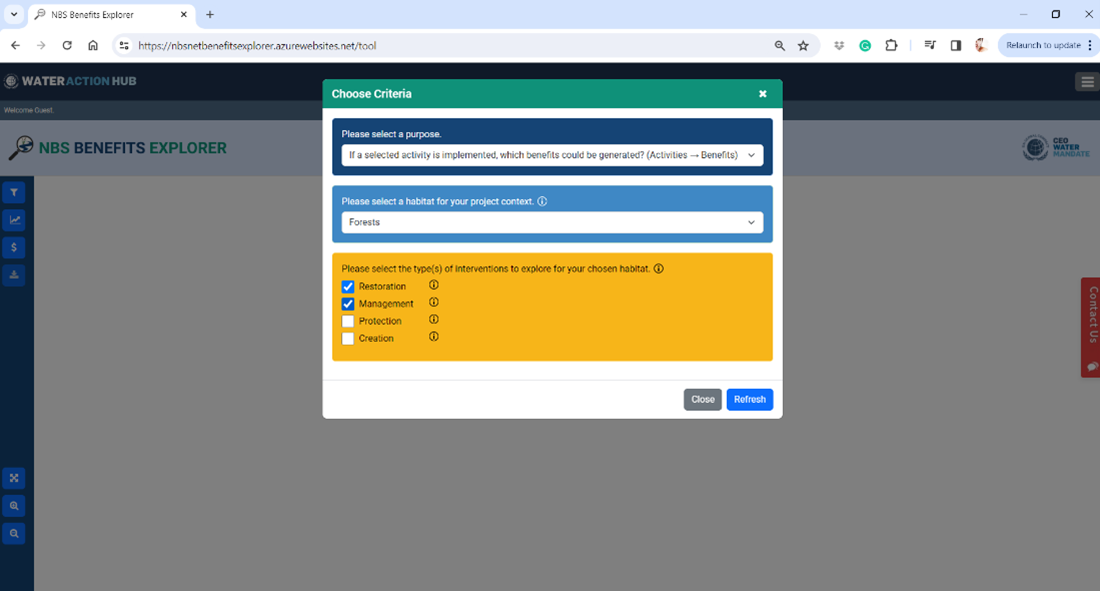
Step 4
Click the Refresh button to view relevant
activities, processes, and benefits in the dashboard.
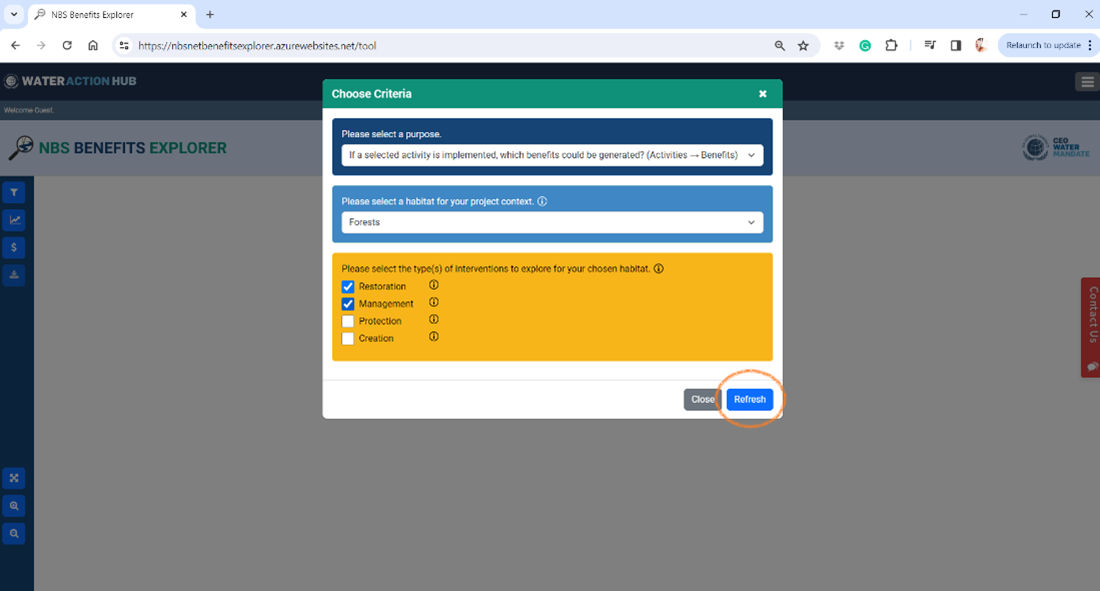
Step 5
Within the dashboard, choose which activities you plan to implement or benefits you want to achieve with your project based on your choice in Step 1 and the mapped benefits will be highlighted. By selecting activities or benefits you will see various highlighted connections across the selected habitat-intervention category.
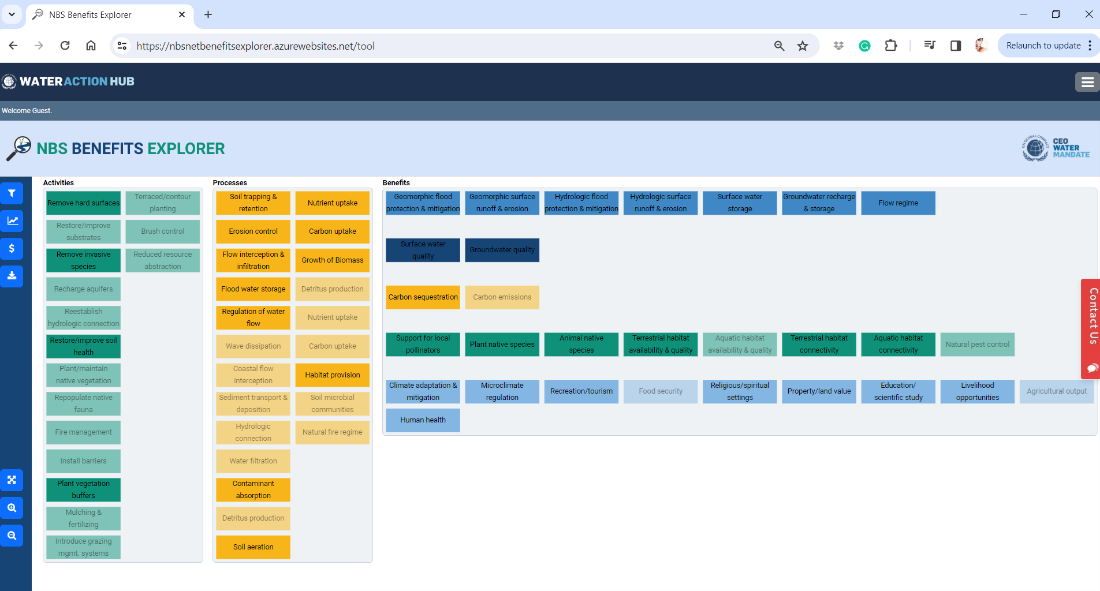
Step 6
Explore your results and view details (e.g., descriptions and available quantification methods). Click and/or hover on any activity or benefit for more details.
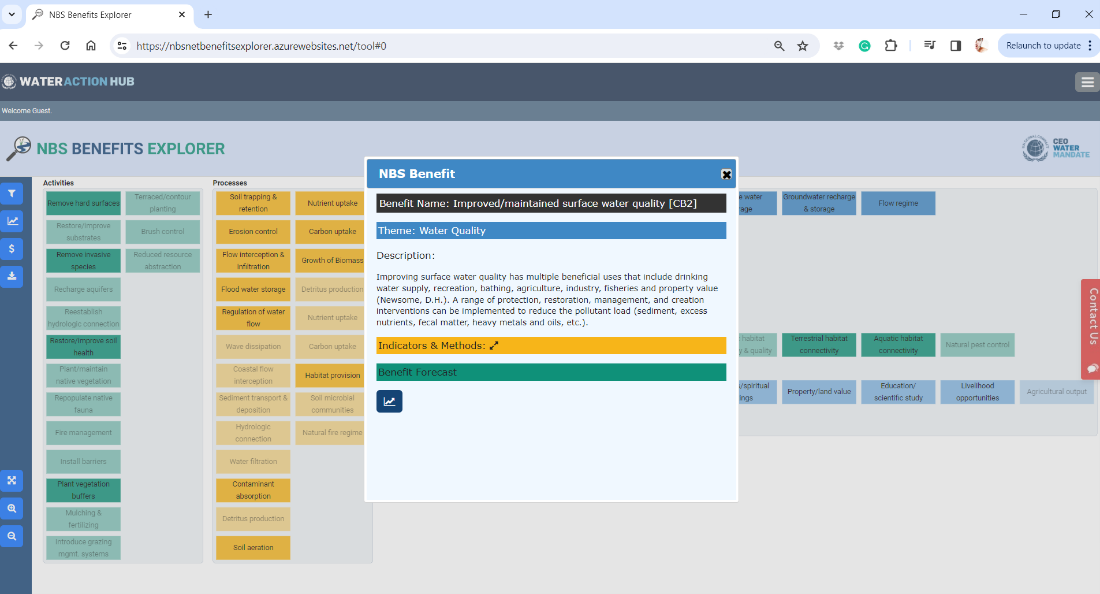
In the benefits popup, use the Expand icon to show or hide Indicators and Methods.

Step 7
If you wish to download the results, click the Download button in the blue left toolbar to download a spreadsheet summarizing your NBS results (i.e., linked activities, processes, and benefits).
